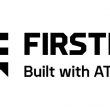A better way to spy
Strix Systems of Calabasas, Calif., announced its Distributed IP Video Surveillance Solution Set, which is based on its Access/One outdoor and indoor wireless systems. The set includes pretested products from Internet Protocol, or IP, video-surveillance vendors that are certified to interoperate with the company’s wireless-mesh network systems.
“Many in the wireless-mesh network business don’t understand the techniques of implementing video surveillance,” said Kirby Russell, director of product marketing at Strix Systems. “By ensuring that all elements of a distributed IP video surveillance solution interoperate, not just the cameras, we’ve eliminated many of the unknowns in building a fully distributed system.”
Public-safety agencies using the system will be able to locate and manage cameras, video servers, storage clusters and network elements wherever they are located, Russell said, whether on buildings, on power or telephone poles, or in patrol cars.
Strix’s Access/One products support the deployment of 802.11 networks, according to Russell. Multiradio nodes that hold up to six devices are dedicated to a specific function to ensure low latency. Additionally, multichannel and multiradio frequency components support radios operating in the unlicensed 2.4 GHz and 5 GHz bands — as well as in licensed 4.9 GHz spectrum — so the network can simultaneously provide a secure frequency for public-safety agencies and Wi-Fi access to the public, he said.
The multihop mesh network is self-configuring, self-tuning and self-healing, and it can be used in conjunction with IP-based video-surveillance cameras to support real-time data transmissions. In addition, because the system does not require centralized servers, a video-surveillance solution will not have a single point of failure as traditional systems often do, Russell said.
Several partners have been certified as interoperable with the Access/One products, and their units have been tested to ensure that each supports the network’s high throughput, low latency and fail-over characteristics, Russell said. One such company is Webcamproshop, which distributes and sells video-surveillance products.
William Ferris, president of Webcamproshop, said the reliable delivery of real-time data is of the utmost importance because his company services homeland-security and public-safety agencies. For example, the company distributes and sells to the Department of Defense entire video-surveillance systems, including Strix mesh-network products; wireless pan-and-tilt cameras; ruggedized enclosures; directional and omnidirectional antennas; and network video-recording software, which records video data via the network link onto a computer hard drive for later retrieval and review.
“Oftentimes, the systems have to be customized because there are different environmental or geographical concerns, including some type of obstruction or change in direction that needs to happen in the wireless piece of it,” Ferris said. “It’s not just a cookie cutter because each location is different.”
The company’s cameras deliver data rates of 10 Mb/s. Public-safety agencies use the products to monitor populated areas and need camera feeds that clearly depict the environment, Ferris said, adding that the Strix system was chosen to support the company’s video-surveillance technology because it “doesn’t disappoint the end-client in any way.” He noted that the throughput speed delivered by Strix provides the near-zero latency and high-resolution image quality needed by public-safety customers.
To learn more, Strix offers a free white paper, Wireless Mesh Networks for Distributed Video Surveillance, at www.strixsystems.com/whitepaperrequest-surveillance.asp.
















